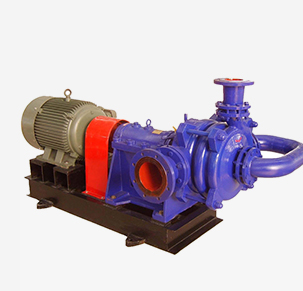Nepali
- Afrikaans
- Albanian
- Amharic
- Arabic
- Armenian
- Azerbaijani
- Basque
- Belarusian
- Bengali
- Bosnian
- Bulgarian
- Catalan
- Cebuano
- Corsican
- Croatian
- Czech
- Danish
- Dutch
- English
- Esperanto
- Estonian
- Finnish
- French
- Frisian
- Galician
- Georgian
- German
- Greek
- Gujarati
- Haitian Creole
- hausa
- hawaiian
- Hebrew
- Hindi
- Miao
- Hungarian
- Icelandic
- igbo
- Indonesian
- irish
- Italian
- Japanese
- Javanese
- Kannada
- kazakh
- Khmer
- Rwandese
- Korean
- Kurdish
- Kyrgyz
- Lao
- Latin
- Latvian
- Lithuanian
- Luxembourgish
- Macedonian
- Malgashi
- Malay
- Malayalam
- Maltese
- Maori
- Marathi
- Mongolian
- Myanmar
- Nepali
- Norwegian
- Norwegian
- Occitan
- Pashto
- Persian
- Polish
- Portuguese
- Punjabi
- Romanian
- Russian
- Samoan
- Scottish Gaelic
- Serbian
- Sesotho
- Shona
- Sindhi
- Sinhala
- Slovak
- Slovenian
- Somali
- Spanish
- Sundanese
- Swahili
- Swedish
- Tagalog
- Tajik
- Tamil
- Tatar
- Telugu
- Thai
- Turkish
- Turkmen
- Ukrainian
- Urdu
- Uighur
- Uzbek
- Vietnamese
- Welsh
- Bantu
- Yiddish
- Yoruba
- Zulu
Telephone: +86 13120555503
Email: frank@cypump.com
नोभ . 11, 2024 14:51 Back to list
pump submersible
The Evolution and Importance of Submersible Pumps in Modern Applications
In the realm of fluid management and extraction, submersible pumps have emerged as a vital tool across various industries. These pumps are designed to be submerged in fluids, functioning effectively in environments ranging from water wells and industrial applications to sewage treatment and agricultural irrigation. Their ability to operate below the surface level makes them indispensable for numerous operations.
Submersible pumps work by employing a hermetically sealed motor that is coupled to the pump body. This design ensures that the entire unit can be submerged in the fluid it is meant to pump, which helps to prevent issues associated with cavitation—an occurrence where vapor bubbles form in a fluid and collapse, leading to significant wear or damage. The efficiency and reliability of submersible pumps stem from their unique construction and operational capabilities.
The Evolution and Importance of Submersible Pumps in Modern Applications
In industrial applications, submersible pumps are employed in a variety of processes, including dewatering in construction sites, managing wastewater in treatment plants, and even in food processing facilities. Their adaptability to diverse conditions—such as varying temperatures and chemical compositions—has made them a go-to choice in sectors requiring robust and reliable pumping solutions. For example, in sewage treatment, submersible pumps handle the transfer of effluents with efficiency and minimal maintenance, which is crucial in maintaining operational performance.
pump submersible

Moreover, the agricultural sector has also seen significant benefits from the use of submersible pumps. Irrigation systems, crucial for enhancing crop yield, often utilize these pumps to access underground water resources. The automation capabilities of modern submersible systems further enhance their efficacy. With advancements in technology, farmers are now able to monitor water levels and pump functions remotely, ensuring a sustainable and efficient use of water resources.
Additionally, environmental considerations are becoming increasingly important in the conversation surrounding submersible pumps. Many manufacturers are now focusing on creating energy-efficient models that not only lower operational costs but also minimize the ecological impact. By optimizing pump designs and materials, the latest models significantly reduce energy consumption, promoting a greener approach to fluid management.
The challenges that submersible pumps face, such as potential corrosion or mechanical failures, are being addressed through innovative engineering practices. Advances in materials science have led to the development of pumps that can withstand harsh conditions, making them even more reliable in the field. As the demand for efficient water management escalates, the technology behind submersible pumps continues to advance, incorporating smart features that enhance performance and lifespan.
In conclusion, submersible pumps are integral to modern fluid management strategies across various sectors, providing efficient, reliable, and sustainable solutions for water extraction and transportation. As technology evolves, we can expect further innovations that will enhance their capabilities and applications, solidifying their role in an increasingly resource-conscious world. Their ability to operate beneath the surface not only revolutionizes how we manage water but also underscores the growing need for effective solutions in an era where every drop counts.
-
Heavy-Duty Mining Sludge Pumps - Wear-Resistant Slurry Handling
NewsAug.02,2025
-
Horizontal Split Case Pump with GPT-4 Turbo | High Efficiency
NewsAug.01,2025
-
ISG Series Pipeline Pump - Chi Yuan Pumps | High Efficiency, Durable Design
NewsAug.01,2025
-
Advanced Flue Gas Desulfurization Pump with GPT-4 Turbo | Durable & Efficient
NewsJul.31,2025
-
ISG Series Vertical Pipeline Pump - Chi Yuan Pumps | Advanced Hydraulic Design&Durable Construction
NewsJul.31,2025
-
ISG Series Vertical Pipeline Pump - Chi Yuan Pumps | Energy Efficient & Low Noise
NewsJul.31,2025










